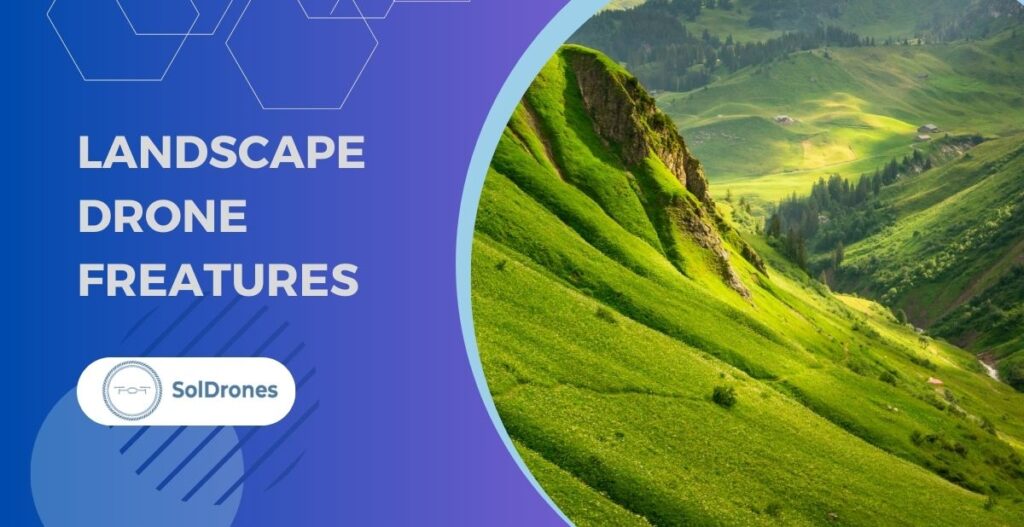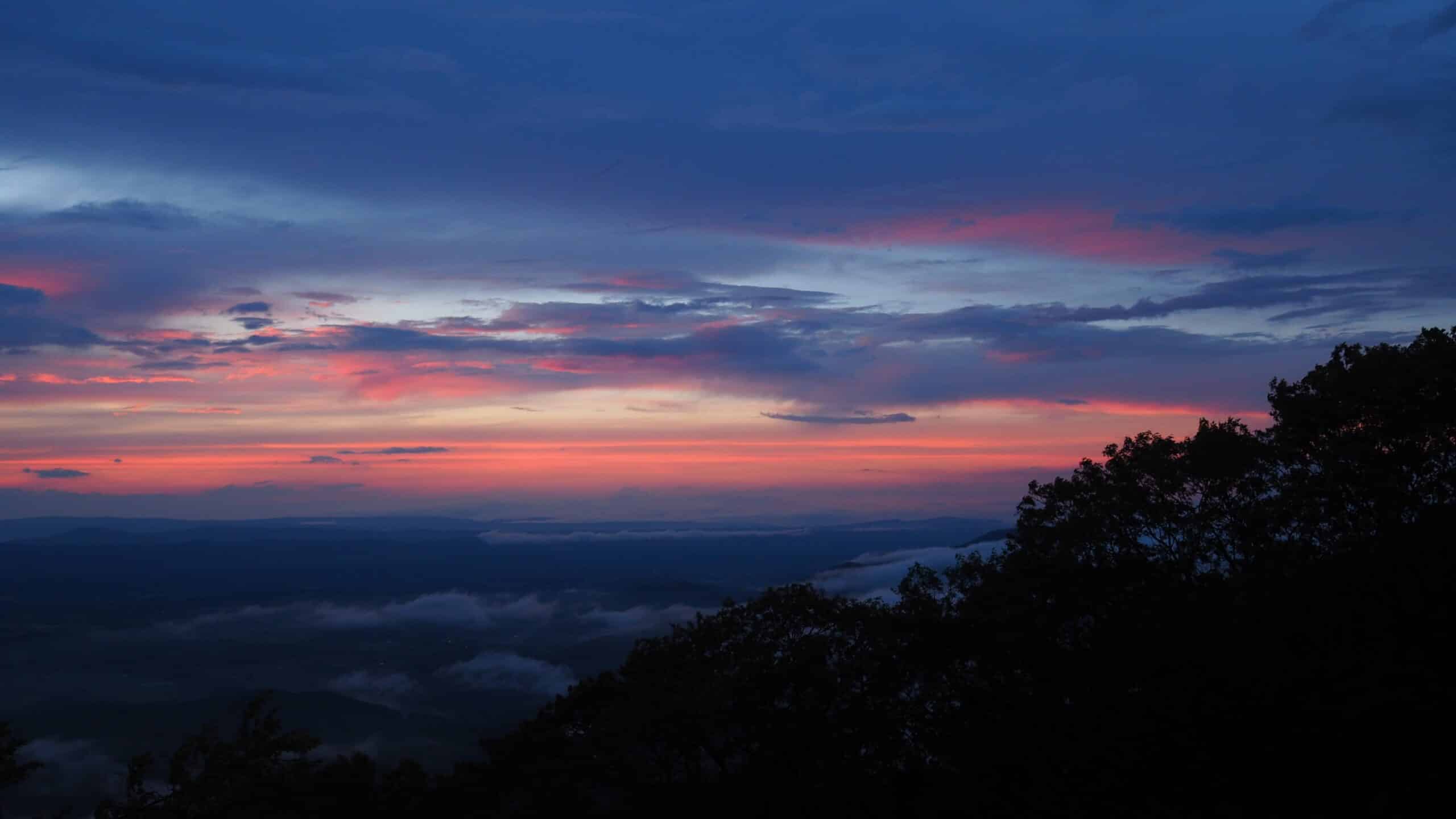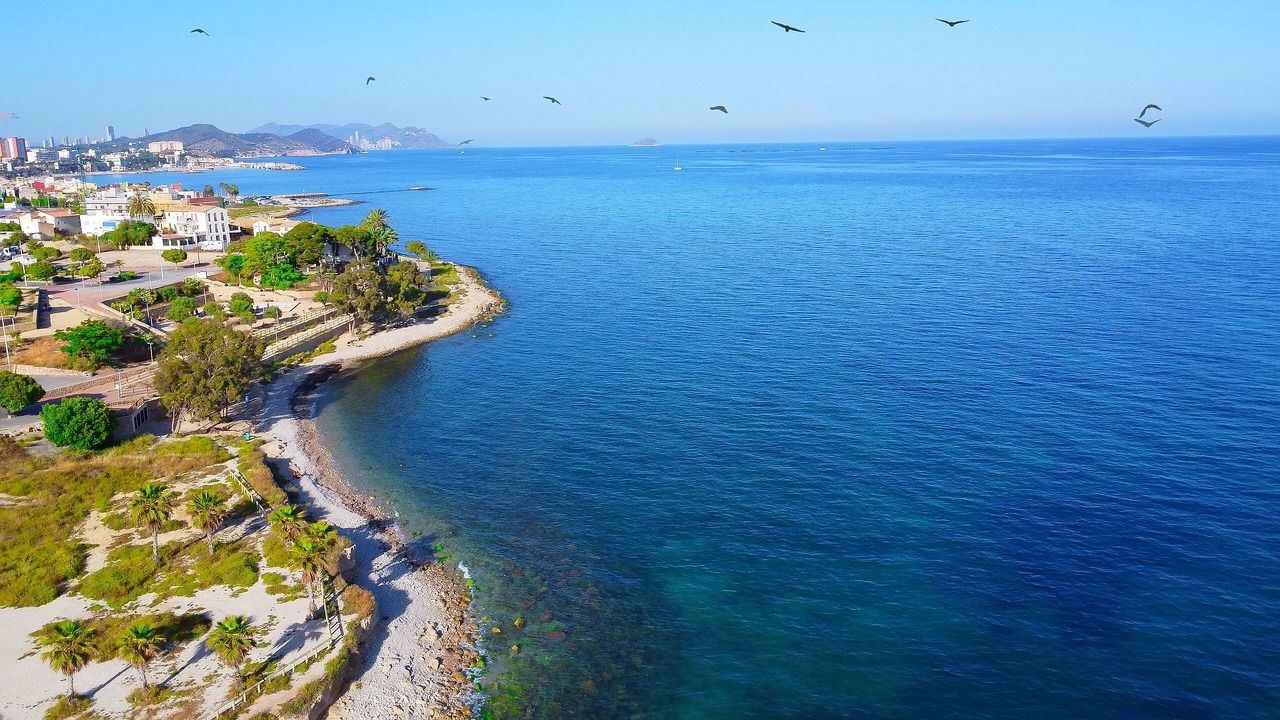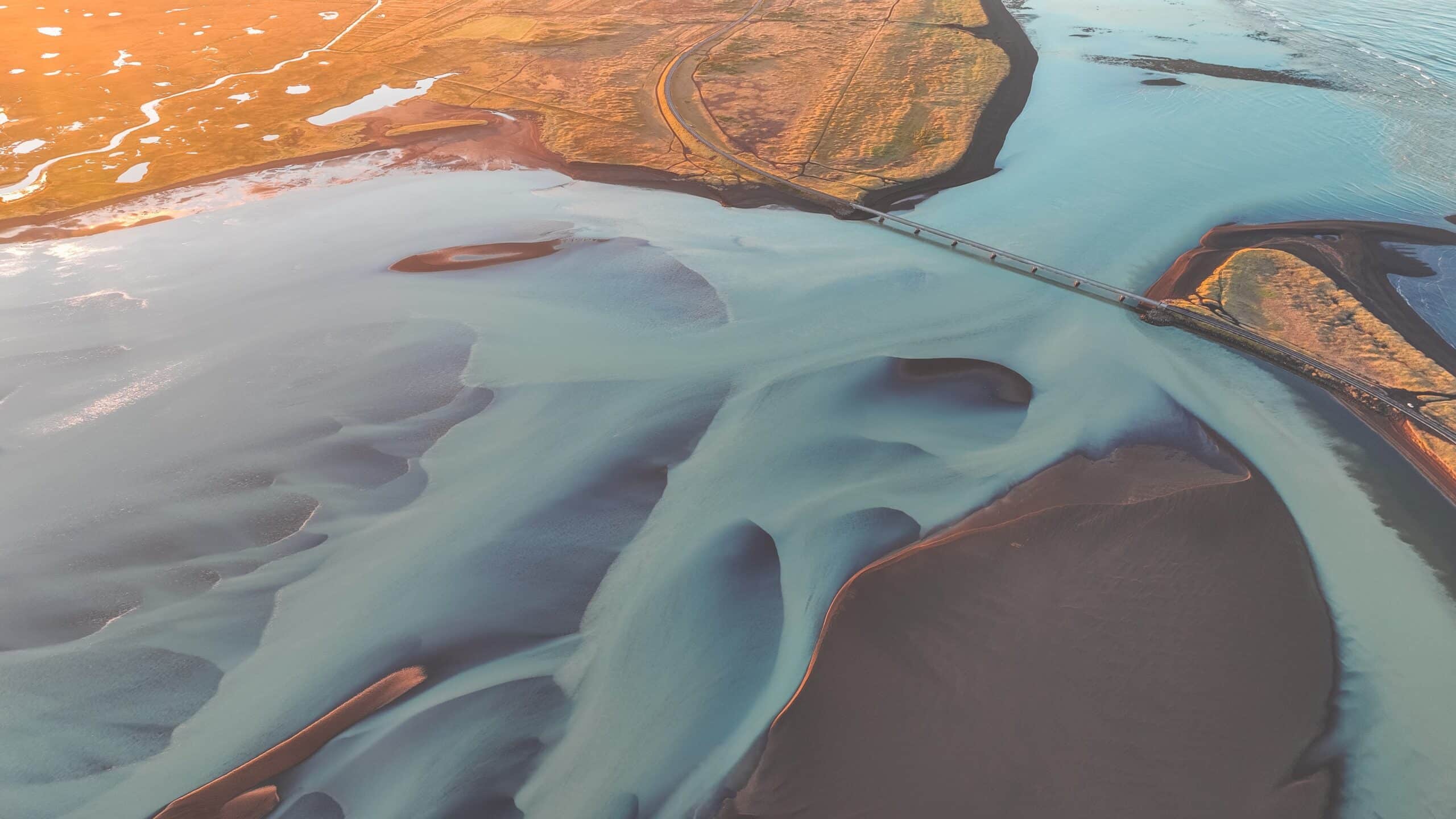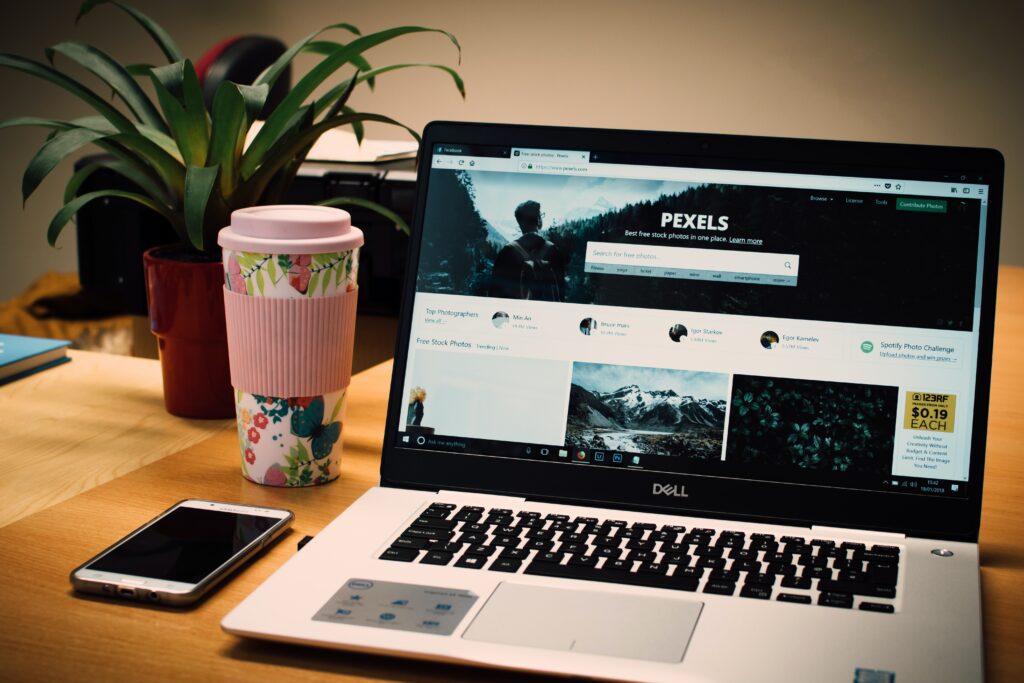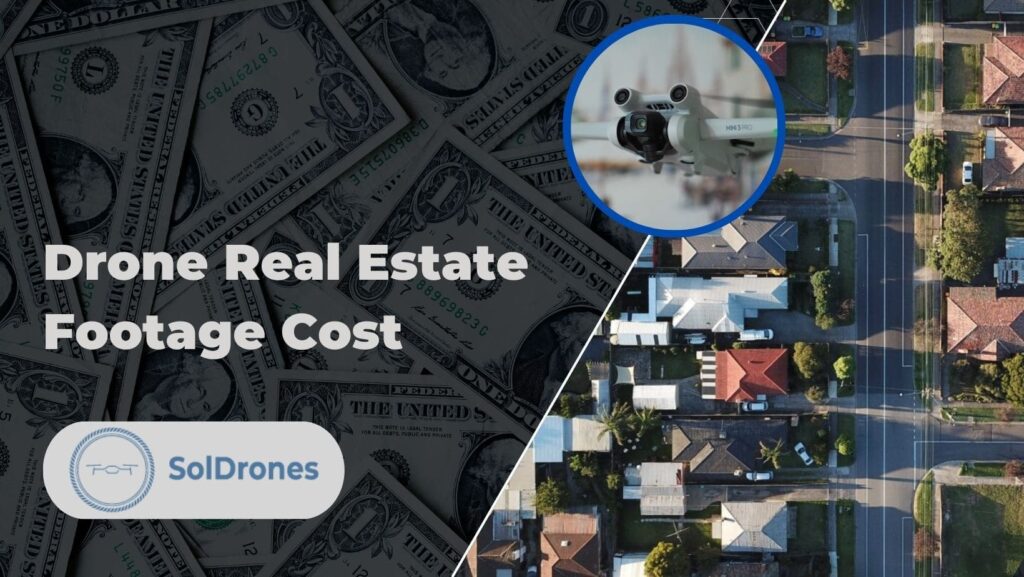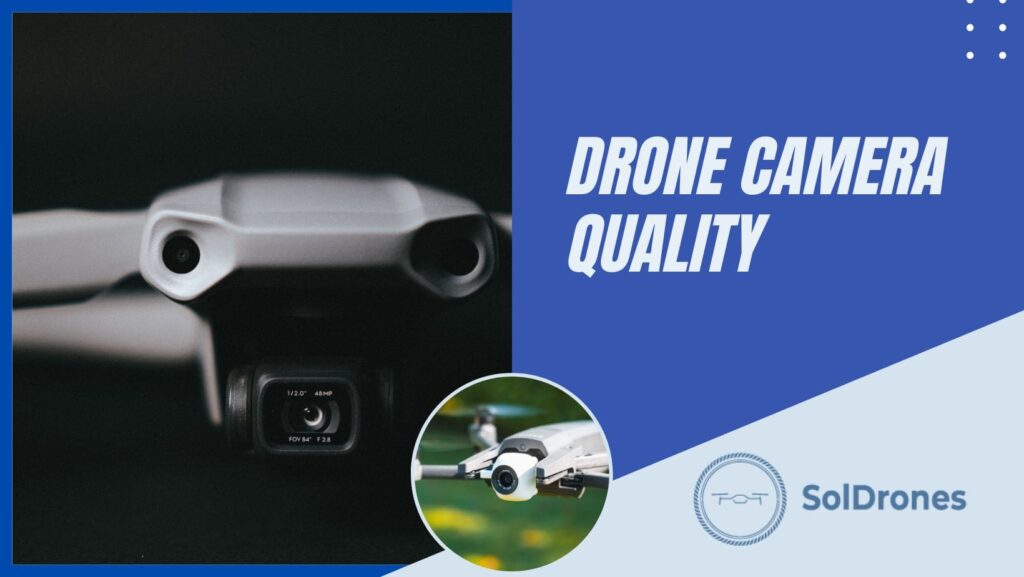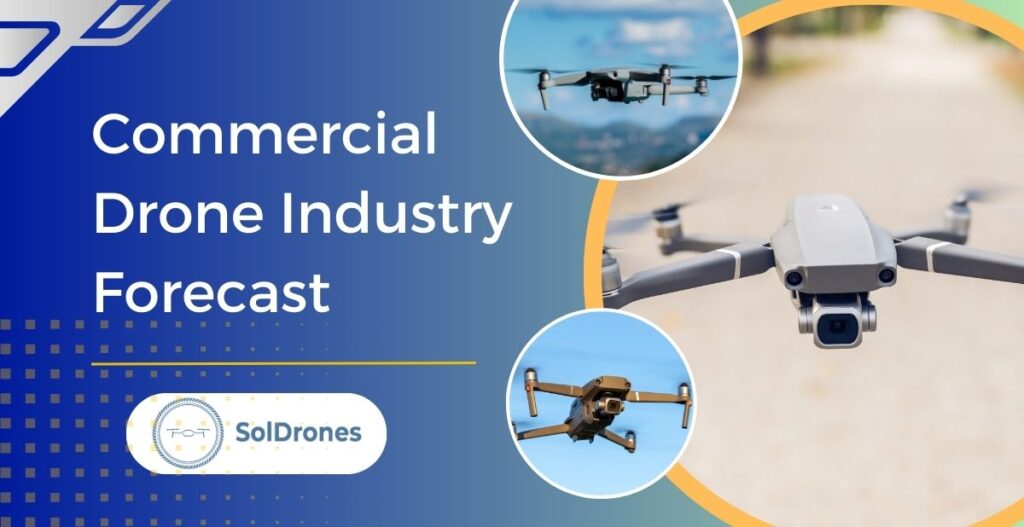Chances are you’ve already taken landscape photography with your drone and have utilized your drone’s camera settings to capture stunning shots of the outdoors.
Some of the best drone photographers in the business know the tricks of the trade to capture scenic landscape pictures that can end up earning them an income.
Nowadays, it’s quite simple to pick up an affordable drone like the DJI Mini 3 Pro or Mini 4 Pro, which both shoot 4K video, and start capturing stunning footage.
By understanding landscape drone features, you’ll position yourself well as a top-tiered drone photographer that can earn big with your content.
What is Drone Landscape Photography?
Drone landscape photography is a style of landscape photography that uses drones to capture images of the natural environment. In many cases, drones can allow photographers to take pictures and videos from unique and often unobtainable perspectives due to their maneuverability and flight angles.
Additionally, drone landscape photography is highly sought after for promotional purposes across advertising material, web content, social media, and more.
Drones are without a doubt one of the easiest tools for photographers to use to open up a world of new perspectives. Flying is both a science and an art, and if you’re a creative person, you’re the perfect candidate to capture amazing landscape drone photography.
As a landscape drone photographer, you’re capable of capturing a wide variety of subjects, from sweeping vistas and grand landscapes to small details and patterns in nature that would be difficult to see from the ground.
Drones can fly over, around, and even into natural features that would be impossible or very difficult for photographers to reach on foot, giving new perspectives on scenes.
One of the advantages of drone landscape photography over traditional landscape photography is that drones can cover greater distances and cover more ground in less time. This allows for greater freedom of movement and can be used in a variety of environments, including mountains, forests, beaches, and even urban areas.
What are the Most Common Landscape Camera Settings on Your Drone
Some of the main challenges to landscape photography are typically lighting and having the ability to capture a wide angle of the shot. Not all drones have the same landscape camera settings, but we’ve compiled a list of the most common settings for you to get familiar with:
- Manual camera mode
- Aperture setting
- ISO
- White Balance
- RAW Picture Format
The sections below go into details about each of these settings.
Manual Camera Mode
Manual camera mode, also known as “M” mode, is a camera setting that allows you to manually adjust the exposure settings, rather than relying on the camera’s automatic settings.
In manual mode, you can adjust other photography aspects like aperture, shutter speed, and ISO independently to achieve the desired level of exposure. This mode is often preferred by professional photographers and enthusiasts who want more control over the final image, and works great for landscape drone photography.
Some sophisticated cameras will provide auto exposure bracketing, where the camera will take three or more shots at different exposures.
When shooting drone photography in manual mode, be sure to use the light meter, or rely on the camera’s built-in light meter, to determine the correct exposure settings.
The aperture controls the amount of light that enters the lens, the shutter speed controls the amount of time that the image sensor is exposed to light, and the ISO controls the sensitivity of the image sensor to light.
By adjusting these three settings, you can achieve the desired level of exposure and create the desired effect in the final image.
Aperture Setting
Aperture on a camera is a setting that controls the amount of light entering the lens by adjusting the size of the diaphragm, and it is expressed as f-stop value, such as f/1.8, f/2.8, f/4.
- Lower f-stop values indicate a wider aperture, which allows more light in, creates a shallower depth of field, and results in a brighter image.
- Higher f-stop values indicate a narrower aperture, which allows less light in, creates a deeper depth of field, and results in a darker image.
It’s okay to consider changing camera settings to ensure aperture settings are meeting your aerial photography needs.
ISO
ISO, short for International Organization for Standardization, is a camera setting that adjusts the sensitivity of the image sensor.
- A higher ISO setting allows the camera to capture more light and results in a brighter image but also increases the amount of digital noise (or grain) in the image.
- A lower ISO setting requires more light to capture a proper exposure but results in a cleaner image with less digital noise.
ISO settings are typically expressed as a number, such as ISO 100, ISO 200, ISO 400, etc. This is particularly important for drone photography because a wide angle can have a larger spectrum of light that needs to be standardized across the image.
White Balance
White balance in photography is the process of adjusting the colors in a photograph to accurately represent the colors of the scene as they are seen by the human eye.
Different lighting conditions, such as sunlight, incandescent light, and fluorescent light, can cause a photograph to appear too warm (with a yellow or orange cast) or too cool (with a blue or green cast).
White balance allows you to adjust the colors in the photograph to neutralize any color cast and produce an image that is true to life.
Most cameras have different white balance settings such as “daylight”, “cloudy”, “tungsten”, and “fluorescent”.
In some cases, you can also set a custom white balance on your drone’s camera, allowing you to adjust the white balance manually by changing the color temperature of the light.
Ultimately, white balance neutralizes the color cast caused by different lighting conditions to produce an image that is true to life, and it can be achieved by using presets or manual adjustments.
RAW Picture Format
RAW is a picture format in photography that captures all of the data that the camera’s image sensor records when taking a photo.
Unlike other image formats such as JPEG, which are compressed and lose some of the original data, RAW files retain all of the data captured by the image sensor, including the full-color range and image details.
Top Tips for a Landscape Drone Photographer
If you’re going to be a successful landscape photographer, you’ll need to take photos and videos that stand out from the rest. By unlocking new perspectives with high-quality photos people admire, you’ll pave your path toward generating more brand awareness. Keep the following tips in mind when capturing landscape drone photography:
- Use a Wide-angle Lens: A wide-angle lens allows you to capture a greater field of view and can help to create a sense of depth and grandeur in your photos.
- Pay Attention to the Light: Light is the most important element in landscape photography. Try to shoot during the golden hours of sunrise and sunset for the best light.
- Experiment with Composition: Try different angles, and use leading lines and natural frames to guide the viewer’s eye through the scene. Use the rule of thirds to create visually interesting compositions.
- Use a Polarizing Filter: A polarizing filter can help to reduce glare and increase the saturation of colors in your photos.
- Capture the Details: Look for interesting textures, patterns, and other details in the landscape to add depth and interest to your photos. Zoom in to capture close-ups of flowers, rocks, and other elements of the landscape, to add an extra layer of interest to your photos.
- Drone Camera Angle and Position: When you’re shooting landscapes and aerial photography, the angle of your camera can make or break the shot and the overall image quality. A great landscape photo is impossible to capture with poor camera angles.
Drone Camera Quality
The more you understand the features related to drone camera quality, the more powerful you will be as a drone photographer. As with any camera, key features and camera capabilities will ultimately determine how your pictures turn out.
- Camera Resolution: The higher the resolution, the better for image production. Poor image resolution and quality will detract viewers.
- Frame Rate: Higher frame rates will result in smoother video, particularly when photographing landscapes.
- Lens Quality: A high-quality lens will result in clearer, more detailed images.
- Image Sensor: A larger image sensor will be able to capture more light and detail, which is better for low-light conditions. .
- Image Stabilization: This will help to reduce camera shake and produce smoother video.
- Low Light Performance: Cameras that can perform better in low light conditions have low light performance settings.
- Dynamic Range: Being able to capture details in both highlights and shadows is referred to as the camera’s dynamic range.
- Raw Image Capture: The ability to capture images in raw format allows for more flexibility in post-processing.
- Color Accuracy: the accuracy of which the camera captures colors in the scene being photographed.
- Aperture: The size of the aperture, or the opening in the lens that allows light to pass through.
Aside from the camera quality features and landscape drone features we’ve reviewed so far, there are several other factors to consider when striding to create the best landscape photographs possible.
Firstly, make sure wherever you’re flying drones, you’re compliant with the local laws. For example, if you’re flying in the United States, you must ensure compliance with the laws and regulations established by the Federal Aviation Administration. Failure to abide by such laws can result in unwanted legal consequences, particularly if you end up flying in no fly zones.
Another factor that can affect the quality of your landscape drone photography is wind speed. Flying drones in windy conditions certainly has it’s challenges for any pilot and flying most drones, so if you can avoid flying on windy days, that would be advised.
Best Drones for Landscape Photography
While most drones these days have camera settings designed to capture landscape photography, some popular drones that we admire for landscape photographers include:
- DJI Mavic 2 Pro: The DJI Mavic 2 Pro is one of the highly-rated DJI drones that is excellent for landscape photography. It features a 20-megapixel Hasselblad camera with a 3-axis gimbal stabilization, and a wide range of manual camera controls, making it easy to capture stunning landscape photos. It has a flight time of up to 31 minutes, which is great for capturing a variety of shots, and some may consider this a good first drone for beginners.
- Autel Robotics EVO II: The Autel Robotics EVO II is another top drone camera for landscape photography, as it has an 8K camera with a 1-inch sensor and can shoot in both JPEG and DNG RAW formats. It also has a flight time of 40 minutes and a range of up to 6.2 miles, which allows for a lot of flexibility in terms of capturing landscape shots.
- Parrot Anafi: The Parrot Anafi is a compact and lightweight drone camera that is perfect for landscape photography. It has a 4K camera with a 180-degree tilt gimbal and a 3-axis image stabilization, which allows you to capture stable and sharp images. It also has a flight time of 25 minutes and can fly in winds up to 31 mph, which makes it great for capturing landscapes in a variety of conditions.
These camera drones are just a few examples of good options for landscape photography. It’s worth noting that camera quality and features are constantly evolving, so it’s always a good idea to check for the latest models and reviews before making a purchase.
Final Thoughts
Landscape drone photography is a highly rewarding and potentially lucrative field that allows you to combine your passion for photography with your love for the outdoors.
By understanding the basics of landscape photography and drone operation, investing in the right equipment, and developing a strong portfolio, you can create a lucrative business and income streams that compound over time. From capturing stunning images for real estate listings, to providing aerial surveys for construction sites, there are many opportunities for drone photographers to monetize their skills and passion. With the right approach, you can become the best landscape photographer in the business.

